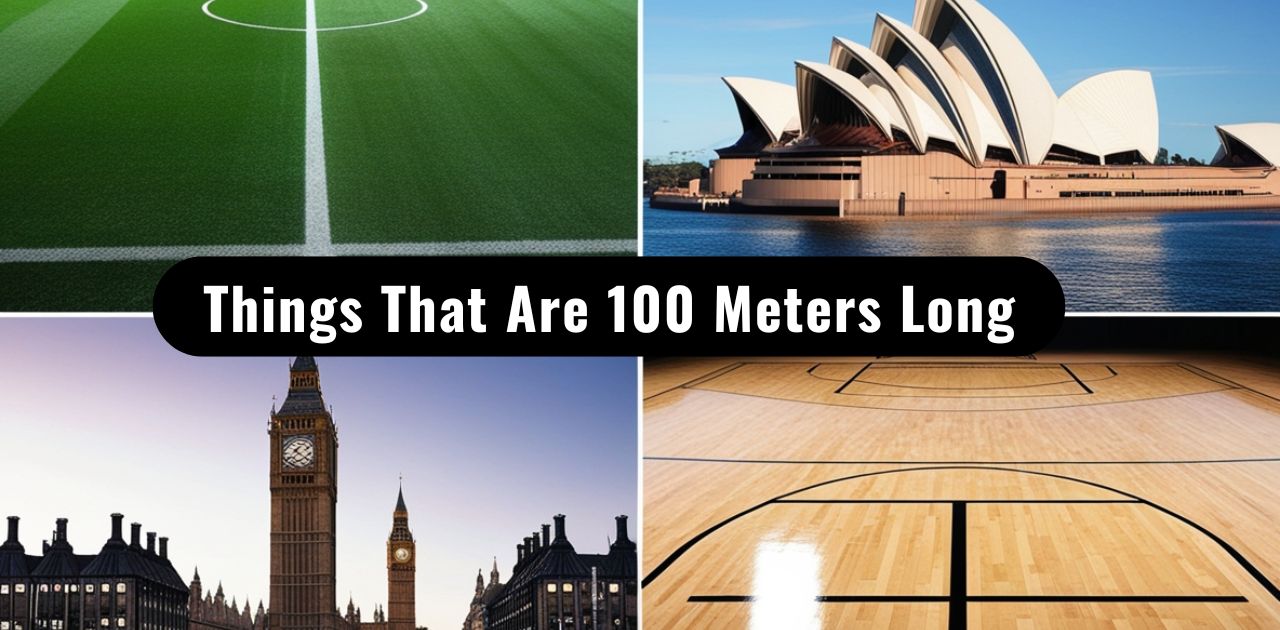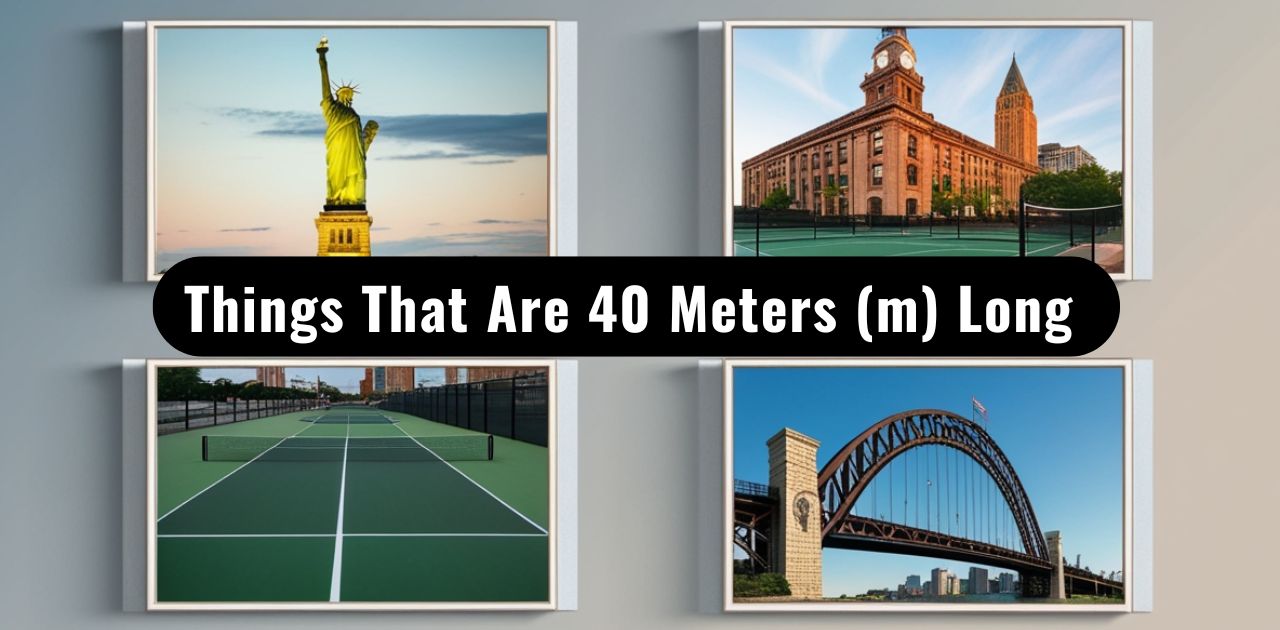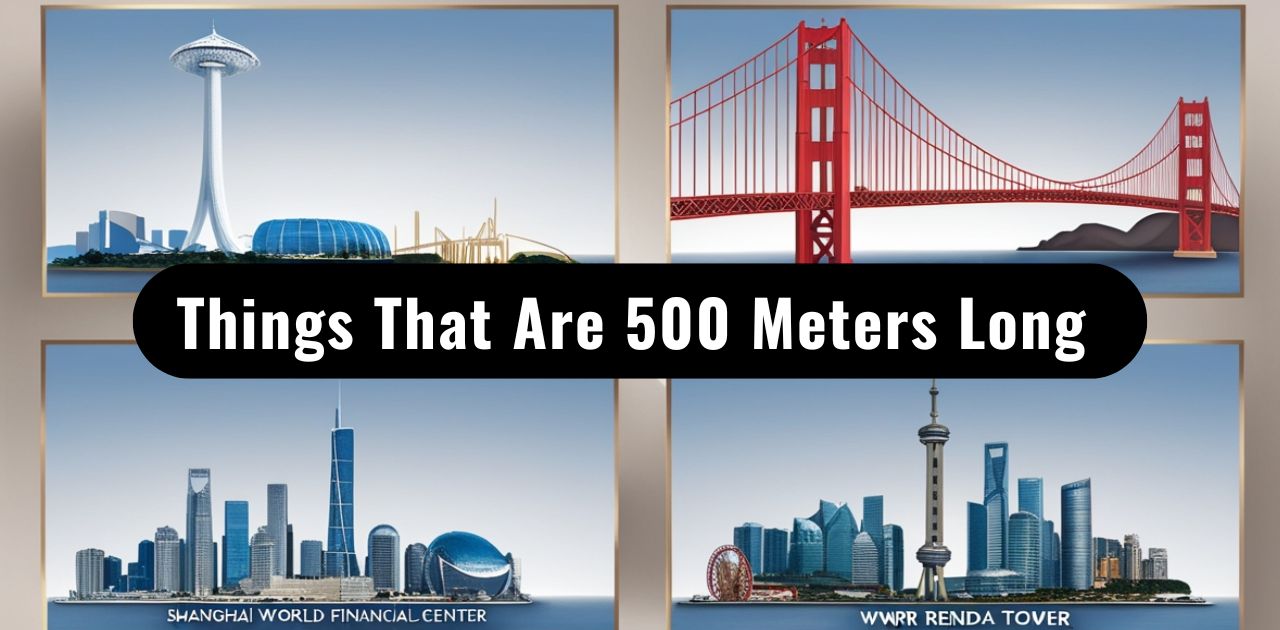Measuring distance can transform our understanding of scale, where length becomes more than just a number. In our quest to visualize extraordinary spatial dimensions, we explore how meters help us compare and estimate remarkable objects that stretch across remarkable geographical landscapes.
Landmarks like the iconic Big Ben in London serve as perfect reference points, allowing us to wonder about the fascinating world of horizontal and vertical measurements that surround us.
From architectural marvels to everyday objects, this exploration invites readers to think beyond conventional dimensional boundaries. By positioning ourselves with comparative insights, we can stretch our imagination across numerical and contextual realms. Whether examining a basketball court’s proximity or understanding landmark structures, we can help ourselves estimate remarkable sizes that challenge our typical perspective.
These surprising measurements aren’t just abstract concepts but gateways to understanding how mathematical principles can equal extraordinary architectural narratives.
How long is 100 meters?
When we calculate the length of 100 meters, we unlock a fascinating world of dimensional understanding that transforms how we perceive distance. In sports like track and field, this measurement becomes more than just numbers it’s a spatial narrative that covers remarkable ground. Approximately equal to 328 feet or 109 yards, this distance represents an enormous expanse that can run across a standard football field with impressive horizontal magnitude.
Diving deeper into numerical perspectives, 100 meters can be converted and estimated through various comparative lenses that make the measurement more tangible. Whether watched in a race or positioned within contextual everyday terms, this length becomes a powerful mathematical concept that helps us appreciate the vertical and horizontal scales we encounter.
From track performances to field competitions, 100 meters represents a tiny yet significant part of our dimensional understanding, broken down into precise scale of movement and extent.
How much is 100 meters?
When we transform our understanding of measurement, 100 meters becomes a fascinating journey through spatial dimensions. By dividing standard units and converting across different scales, we uncover a quantitative landscape that stretches beyond simple numerical boundaries.
How long is 100 meters in Kilometers, Yards and How Far 100 meters in Feet and Miles?
In kilometers, 100 meters represents a modest 0.1, yet in feet, it expands to an impressive 328, offering a comparative perspective that quickly illuminates the magnitude of this linear distance.
Sports like American football and track reveal how these dimensional calculations become tangibly meaningful. A vertical and horizontal estimation shows that 100 meters equals approximately 109 yards, which represents about 6 percent of a mile a progressive insight into spatial positioning.
This standard of measurement transcends mere mathematical abstraction, providing a contextual understanding that transforms how we perceive distance and length in our everyday terminology.
How Far Is 100 Meters to Walk?

Walking 100 meters represents a simple yet profound measurement of urban mobility, transforming abstract spatial concepts into tangible human movement. At a normal pace, this distance becomes a casual journey that takes merely 1-2 minutes, equivalent to crossing a football field with minimal effort. The linear magnitude of this walk effortlessly connects urban environments, whether crossing a park or reaching a bus stop, demonstrating how pedestrian positioning seamlessly integrates into daily life.
The horizontal exploration of 100 meters unveils an excellent opportunity for stretching legs and capturing fresh air, making it an easy progressive exercise within one’s daily schedule. Its contextual significance lies in its comparative dimensional nature fast, simple, and readily squeezable into urban terminology. This quantitative perspective highlights how such a standard measurement can represent more than just distance, embodying mobility, speed, and the rhythmic pulse of everyday human movement.
How Long Does It Take To Run 100 Meters?
The running of 100 meters transforms from a simple task to a breathtaking display of athletic prowess where professional sprinters can cover this distance in an astonishingly quick under 10 seconds. Athletes from across the world dedicate years of rigorous training to master this competitive movement, honing their muscular endurance and velocity to achieve precision in a linear burst of international performance that represents the pinnacle of human speed and physical effort.
1. 100-Meter Sprint

The 100-meter sprint stands as a common and easy to remember benchmark in track and field athletics, where athletes demonstrate extraordinary performance by running a straight line in mere seconds. This quintessential event transforms a brief line of meters into a powerful demonstration of human strength and power, serving as a reference point that captures the explosive potential of competitive run dynamics in professional sports.
2. Big Ben

Standing as a testament to architectural brilliance, Big Ben towers over London’s skyline, embodying more than just a clock tower. This monumental vertical structure rises precisely 100 meters, creating a stunning geographical landmark that captures the essence of British culture. When you gaze upward, the sheer scale of this historical symbol commands attention, transforming from a mere time marker to a cultural icon that represents architectural ingenuity.
The landmark doesn’t just stand it communicates. Its height offers a breathtaking view of the city, allowing observers to appreciate how a single structure can become synonymous with national identity.
By comparing its significant presence to other urban elements, Big Ben stands as a well-known tall testament to engineering and cultural heritage, inviting viewers to rise above ordinary perspectives and recognize the extraordinary narratives embedded within its towering silhouette.
3. Twice the Height of the Arc de Triomphe

Nestled in the heart of Paris, the Arc de Triomphe serves as a remarkable national landmark that transforms architectural understanding when considering its potential scaled dimensions.
The monumental structure, typically standing at 49 meters, becomes a fascinating graphic representation of spatial scales when doubled to reach the 100-meter threshold, creating an imaginative juxtaposition that gives viewers a profound sense of architectural possibility.
From the foot of this historical monument, one can imagine how standing at its base approximates an urban experience where height becomes a narrative of cultural significance, talking beyond mere physical dimensions to represent a popular symbol of French architectural heritage.
4. Three and a Half Basketball Courts

NBA courts provide an ingenious familiar method of understanding spatial dimensions, where three and a half standard basketball courts lined side by side create a concrete distance of precisely 100 meters. Sports enthusiasts can effortlessly understand this measurement by watching or playing, transforming the abstract length into a useful comparison that helps visualize substantial spatial scales.
By referring to something simple and enjoyable, this approach makes complex measurements easier to swallow, allowing individuals to make immediate mental connections between standard court dimensions and larger total distances.
Read Also >> Things That Are 300 Feet Long or Big
5. Five and a Half Bowling Lanes

Bowling transforms into a precise spatial measurement tool where five and a half standard lanes, each spanning 18.28 meters, yield an approximately 100-meter distance that avid sport enthusiasts can effortlessly understand.
This popular activity correlates complex measurement concepts through a simple yet ingenious approach, allowing individuals to imagine and realize how game infrastructure can equal significant spatial benchmarks by multiplying familiar length dimensions into a total that provides an intuitive method of comparing dimensional relationships through a fun and accessible idea.
6. Alpha Tower

Nestled in the heart of Birmingham, the Alpha Tower emerges as a tallest architectural testament that provides an extraordinary visual interpretation of vertical measurement, strategically deployed to help observers derive an intuitive sense of urban spatial scale.
This architectural landmark stands adjacent to the city’s skyline, contributing a structure that vertically represents not just a building, but a profound urban infrastructure measuring nearly one hundred meters, inviting viewers to feel the dramatic height and concept of dimensional perspective through its imposing presence.
7. The Sydney Opera House

The Sydney Opera House emerges as an extraordinary iconic landmark that provides a stunning architectural representation of spatial dimensions, resembling a magnificent sail against the Sydney skyline.
This artistic structure helps observers visualize complex measurements, effectively spanning territorial boundaries and emphasizing how architectural design can transform urban landscapes into dimensional narratives that equal approximately 100 meters in length.
By understanding its extraordinary impact, viewers can compare this cultural symbol as more than just a building, but as a profound architectural interpretation of spatial design that helps contextualize immense geographical measurements.
8. Length of a Soccer Pitch

When you think about measuring extraordinary lengths, the soccer field offers a fascinating perspective. Imagine standing on a ground where players move across a distance that perfectly illustrates 100 meters a visual representation embraced by the world’s most popular sport.
From the spectator’s view, the pitch’s length becomes an intuitive means of understanding spatial size, effortlessly stretching across the landscape where everyone has either played or enjoys watching.
This easy impression of measurement transcends simple numbers, transforming a standard field into a living, breathing reference point that helps us put complex distance into relatable context.
9. Two Olympic-sized Swimming Pools

Understanding vast dimensions becomes remarkably simple when you consider two lengths of an Olympic pool, which precisely map out 100 meters. For any swimmer who’s experienced the familiar setting of competitive swimming, this visualization offers an easy and fun way to pictorially understand spatial measurement.
Imagine standing at the edge, ready to dive into a space that stretches beyond typical perception a means of comprehending distance through the action of aquatic dimensions that remains deeply relatable to athletes and spectators alike.
10. Two-Thirds the Length of the Shambles

Nestled in the heart of York, the Shambles offers a remarkable journey through measurement and history, where two-thirds of 100 meters unveils a famous street that captivates visitors’ imagination. This cobblestone pathway provides a visual stretch of distance that invites travelers to visit and compare the reality of historical urban length.
Walking along this iconic thoroughfare, one can easily multiply the sensory experiences, creating a well-crafted image of spatial place that transcends typical street dimensions.
11. Three-fifths the Height of the Singapore Flyer

Visiting the iconic landmark of the Singapore Flyer reveals a mesmerizing reference point for understanding extraordinary meters of vertical space. This colossal observation wheel, towering across the earth, offers a visual perspective that transforms how we perceive height.
By examining the comparison of 100 meters as a fraction of its impressive tall structure, travelers gain an unparalleled insight into architectural scale that makes the ferris wheel a famous engineering marvel.
12. Long Bridge Section

Connecting vast areas across rivers and highways, engineers design bridge sections that masterfully span 100 meters with remarkable precision. The large structure reveals an intricate length where each section withstands heavy usage and challenging weather conditions.
When we look across these expansive distance points, we can easily conceptualize how designed infrastructure transforms our understanding of spatial engineering, bridging not just physical gaps but human potential.
13. The Length of 2 Airport Runways

In the realm of aviation, runway design demands precise space management where large planes execute critical land and take off maneuvers. Aligned across 100 meters, these strategic airport pathways represent a critical intersection of safety, speed, and engineering precision.
The required area for airplane movement reveals how fast transportation hinges on carefully decelerated trajectories, transforming length into a calculated ballet of mechanical travel that accommodates diverse aircraft size.
14. Half the Height of Canada Square

When exploring extraordinary measurements, the world of architectural heights reveals fascinating insights. Consider Canada Square, which represents an intriguing benchmark in our journey through 100-meter dimensions.
Standing at approximately half the height of iconic structures like the Empire State Building, this landmark exemplifies how urban engineering transforms spatial concepts. The New York City skyline, with its towering building designs, offers a remarkable canvas for understanding scale.
Measuring precisely at 100 meters, such structures challenge our perception of vertical space. By breaking down the height into quarter segments reminiscent of the famous Empire State Building’s 443.2-meter profile with its distinctive antenna we gain a nuanced appreciation for architectural proportions. These tall monuments aren’t just physical structures; they’re mathematical narratives articulating human ambition and engineering precision.
15. A Quarter The Height Of Empire State Building

In the realm of urban architectural marvels, the HSBC Tower stands as a quintessential example of engineering prowess. Located in the heart of London, this remarkable skyscraper rises to an impressive 235 meters, with 45 floors that represent the headquarters of the HSBC Group.
Built in 2002, this structural reference point elegantly demonstrates how modern buildings can capture the imagination, embodying half the height needed to reach our 100-meter exploration, while showcasing the intricate height and design complexity of contemporary urban landscapes.
Conclusion
100 meters represents more than just a numerical measurement it’s a universal benchmark that bridges understanding across multiple domains. From track and field competitions in the Olympics to soccer pitch dimensions, this length serves as a critical reference point in sports and beyond.
Whether measuring tower heights, airport runway expanses, or comparing basketball courts, this distance transcends mere numbers, transforming abstract size perceptions into tangible everyday things. The 100m sprint epitomizes human potential, while Big Ben’s Tower illustrates architectural scale, demonstrating how measurement becomes a powerful tool for comparisons and spatial comprehension.
FAQ’s
How far is 100m to walk?
A typical person takes approximately 1-2 minutes to walk 100 meters at a casual pace, covering about 60-70 steps.
How far is 100 meters in minutes?
Walking speed determines time: At average pace (4 km/hr), 100 meters takes roughly 90 seconds; at brisk pace, around 60-75 seconds.
Is 100 meters as long as a football field?
Almost! A standard American football field is about 91.44 meters, making 100 meters slightly longer than a full football field.
How long is 100 meters visually to walk?
Imagine walking from one end of a large stadium to another, or crossing approximately 1.5 city blocks in a straight line.
How many meters is a 12 minute walk?
An average walker covers around 800-1000 meters in 12 minutes, depending on individual walking speed and terrain.
Is 1 km 100m?
No, 1 kilometer equals 1000 meters, which is ten times longer than 100 meters.
How far is a 5 minute walk in meters?
A typical 5-minute walk covers approximately 400-500 meters at an average walking pace.
How far can you see at 100m?
On flat terrain with clear conditions, a person can typically see objects and details quite distinctly within a 100-meter range.





